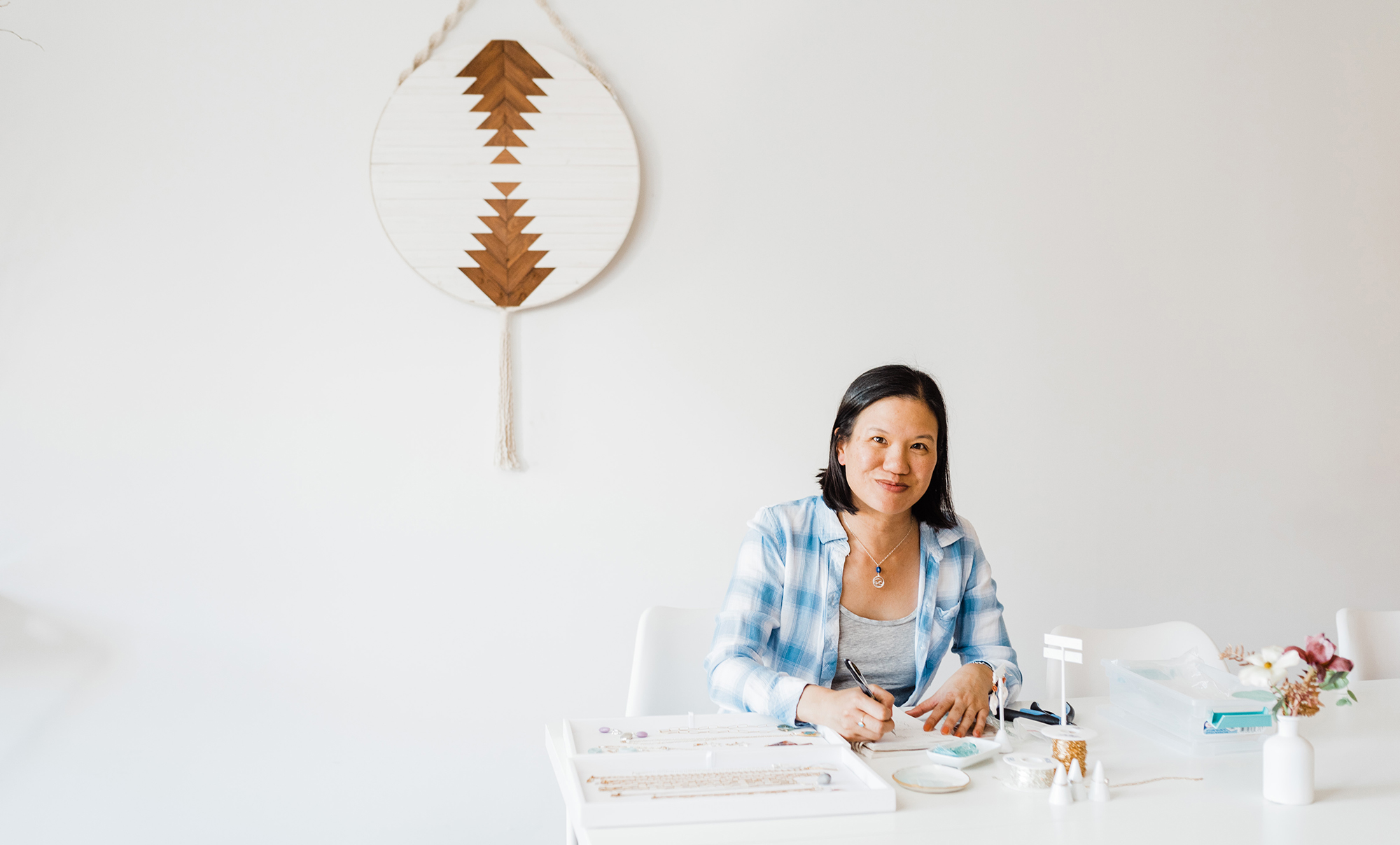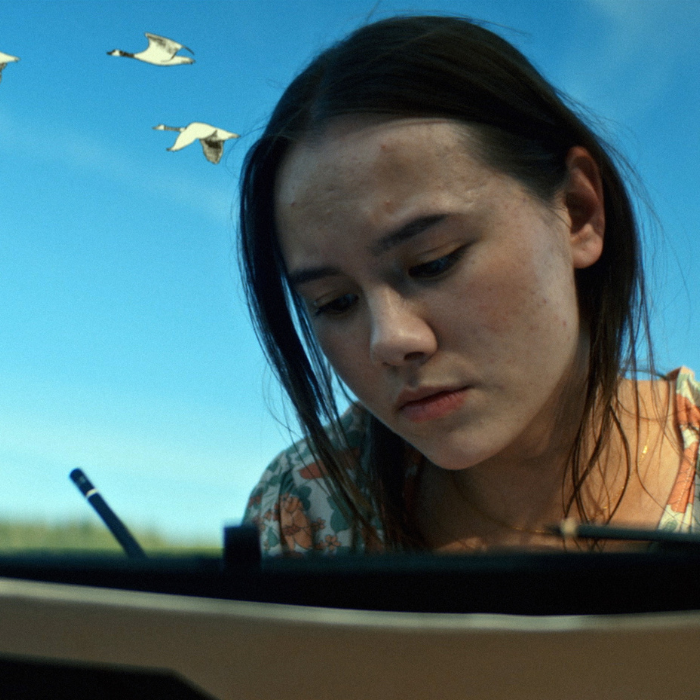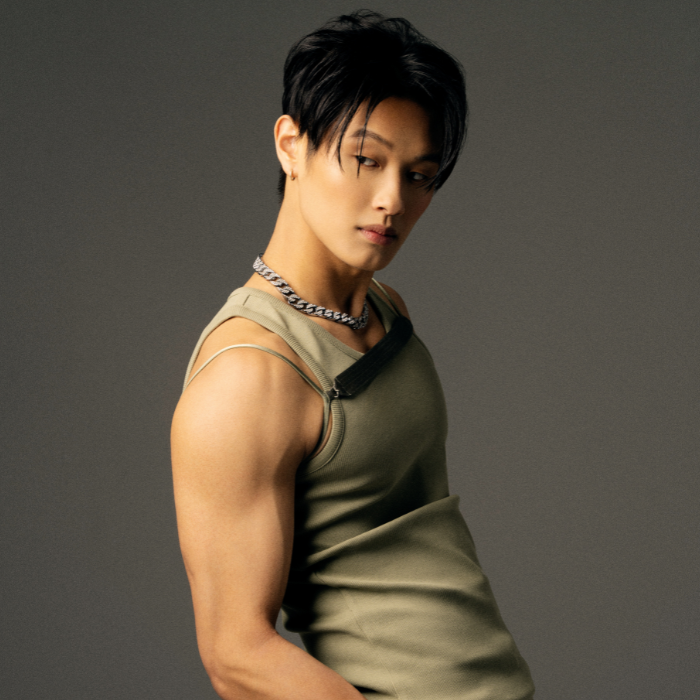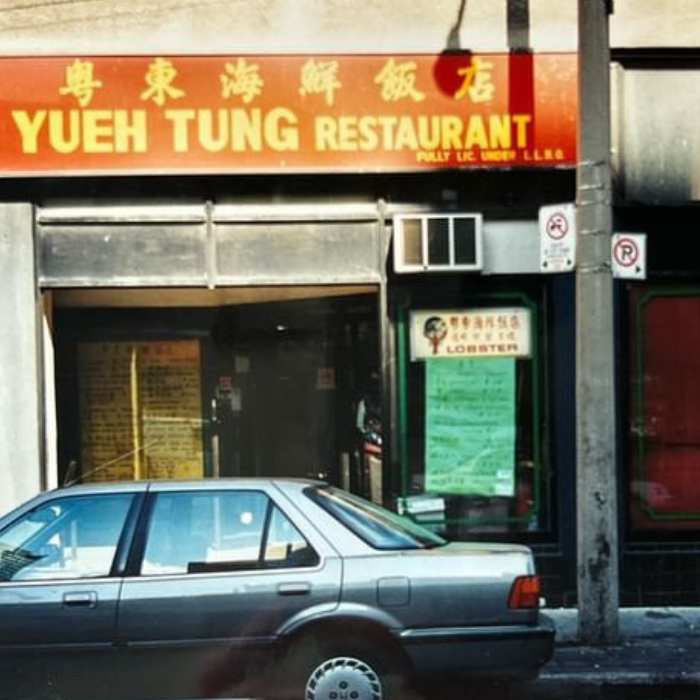When you’re a child of an immigrant family, it’s natural that your career goals reflect what your parents want for you: a doctor, a scientist, an engineer. And when your immigrant parents are a chemist and an electrical engineer, it’s a given you follow in your parents’ footsteps.
Peggy Li wanted to be a lot of things growing up, and while her path began in the direction of what her parents wanted, she was drawn to a more creative journey to where she is today: a jewelry designer.
Growing up, Peggy was a jack of all trades from science to arts. She pursued a Chemical Engineering major from UC Berkeley and after graduating, she landed an internship with a film production studio which later led to a writing role with Channel One News, marking the beginning of her creative career. While her parents were aghast at the direction, her college degree was satisfactory for her parents to accept it. And luckily they did — it was through Channel One News where she Li have the opportunity to lead her to where she is today.
After interviewing the costume designer for Buffy the Vampire Slayer as one of her assignments, Li decided to send along some of her own jewelry pieces that she had been making on the side as a hobby. She didn’t think much of it but weeks later, she received a phone call letting her know her pieces were used for the next season of Buffy, and was asked to send everything else that she had.
To date, Peggy’s jewelry pieces have been featured on shows like Riverdale, Dead to Me, The Bachelorette, Jane the Virgin, How to Get Away with Murder, and The Good Witch, to name a few. Most recently, it has been featured in Kim’s Convenience, worn by Janet, who is played by Andrea Bang. As an Asian American designer, Li says it is especially nice to see her work on Asian actors and characters that reflect her own upbringing and culture.
Based in the San Francisco Bay Area, Peggy is seeing the impacts of COVID and racism to the Asian community in her town and around the world. To support where she can, she has designed a few pieces where 100 per cent of profits are going to different charities including #StopAsianHate GoFundMe and Save Our Chinatowns.
Below, Peggy speaks to The RepresentASIAN Project on choosing her own path, collaborating with the Asian community and finding her own voice during a time when Asians are speaking up.
On choosing a path against what her parents wanted
My parents came to the U.S. for graduate school from Taiwan, and I grew up in a small town in Northern California [where there were] not a lot of Asians. [My story is] like a lot of typical first-time immigration stories— you grow up thinking you’re going to be a scientist or a doctor maybe an engineer. My mom was a chemist and my dad was an electrical engineer, so I thought I wanted to be a scientist or a veterinarian [but] at some point I was also interested in maybe going to culinary school or writing. I felt locked into the track of following in my parents’ footsteps and doing something in science, so I ended up going to college at UC Berkeley and got a science degree.
On the side, I was studying writing and doing lots of arts and crafts; I was really inspired by artisans and selling stuff on the streets of campus. After college, I got an internship with a film production studio in Los Angeles and my parents were kind of aghast. [I] eventually got a job working for Channel One News that covered news and lifestyle. They were just launching their website so I was writing for their pop culture channel there [while] also making jewelry on my own. Eventually I did a story on the show, Buffy the Vampire Slayer. I loved the fashion so I thought I’d interview the costume designer. I got to talk to her and did the interview and afterwards, I thought to myself, “I make all this jewelry for myself, why don’t I send this stuff to the show to see if she likes it and get her opinion on it?”
I sent it to her and didn’t think about it. Weeks went by…then I got a phone call [from] her and she [said] “Peggy, I loved your stuff. We’re going to use it in the next season of the show and by the way, send everything you have. I gave your name to a reporter who will be contacting you.” I was shocked and got the call from the journalist [who said], “I hear your stuff will be on the next season of Buffy, where can people buy it?” I said, “People can buy it on my website.” I told my coworkers, “I guess I need to build a website right now.”
That was the start of the business…from there it just grew. I’ve been on Arrow, Riverdale, Dead to Me, The Bachelorette, Kim’s Convenience, a couple of movies [and more]. [Working with costume designers] was baked into the DNA of my business, [as is] cultivating those relationships over the years. Even after Buffy, I ran my business as a side hustle for several years. I was very reluctant to tell people about my business for a long time — I think [it was] that lingering feeling of, I needed to have a real job. After several years burning the candle at both ends, something had to give and I chose my jewelry business. I’ve now run it full time for seven years or so!
On connecting with other Asian American and Canadian artists
You don’t see Asians represented in the media, so anytime something is out there, we all gravitate to it. I think it always piques my attention to see those projects. I wanted to be part of [Kim’s Convenience], so I reached out to the costume designer of that show and she very generously said she loved [my] stuff and started using it on the show, which was really great. I want to support other Asian American artists and Asian Canadian projects so it’s cool when you can get those arts together.
[When it comes to the fashion and jewelry industry]…people are finding more of their voice and wanting to contribute to the dialogue around fashion and representation and that’s really important. It’s time for that to start happening.
On using her business to give back
When the pandemic started, I started a fundraising item where I donated 25 per cent of sales from my Weather the Storm Necklace to World Central Kitchen [which provides emergency meals and support during the COVID-19 pandemic]. It was really great and felt really good to do that.
As the pandemic went on and so many minority and small businesses were being affected, I was thinking about what I could do to help raise funds for these communities, especially communities like the Chinatown here in San Francisco in Oakland. [Then], the Asian hate crimes started happening and made it more urgent. I finally settled on creating a necklace and a pair of earrings with little fortune cookie charms and I’ll be donating the proceeds to an organization to [called] Save Our Chinatowns, which is a grassroots organization. [There’s also an ox necklace with proceeds] going to the #StopAsianHate GoFundMe.
On defining what Asian representation means to her
I think everybody has their individual experience and that always informs their beliefs. Representation to me is being out there, being present and taking ownership of the work, ownership of their place in the community and if you have the platform and the means to contribute back to that community, to do so in the way that you can.
[It’s] tough to identify how not being immersed in your native culture can affect you. I think it’s tough to feel guilty about it, it’s weird to try and overthink it too much. As an Asian designer, when I read the profile of Amanda Poh and how she talks about how she’s representing her heritage through her design, I thought, “Am I reflecting my culture in my designs?” I don’t know if I am consciously, but do we all do it all unconsciously as well? It’s tough when you feel “how conscious does it need to be conscious?”. We want to represent, what does that mean? Maybe my answer is that I don’t have an answer yet. I don’t know and I’m still exploring what representing Asian means for me today.
Growing up, I turned negative attention into positive attention and maybe that was my personal way of coping with it. Today as an adult, [I’m wondering] what was I doing then and what should I be doing now? I’m feeling drawn into this movement where people are feeling like now’s the time to really speak up and get together in solidarity. I think it’s fine to ask, “What is my say in that and do I have a say?”
I appreciate talking to more people who are exploring this moment too. You want to have an answer, but it’s not necessarily the truth. I also don’t want to reject my childhood: our parents came here and part of their work and struggles was to assimilate to the culture, and to reject that effort or your success, which is what your parents wanted for you, is a weird feeling. It’s a balancing act and there’s nothing wrong with accepting the good and bad from both sides.
This video has been condensed and edited for length and clarity.
Like this post? Follow The RepresentASIAN Project on Instagram, TikTok and YouTube to keep updated on the latest content.











